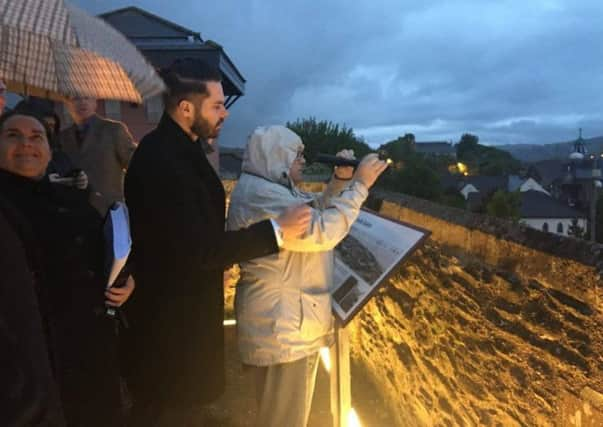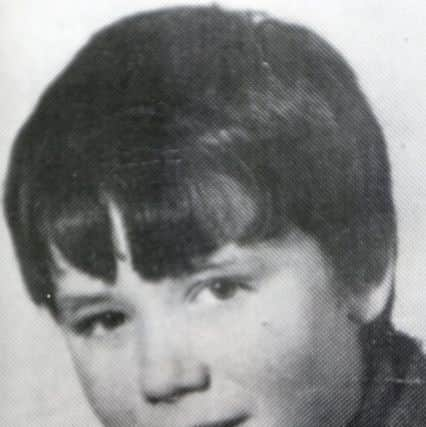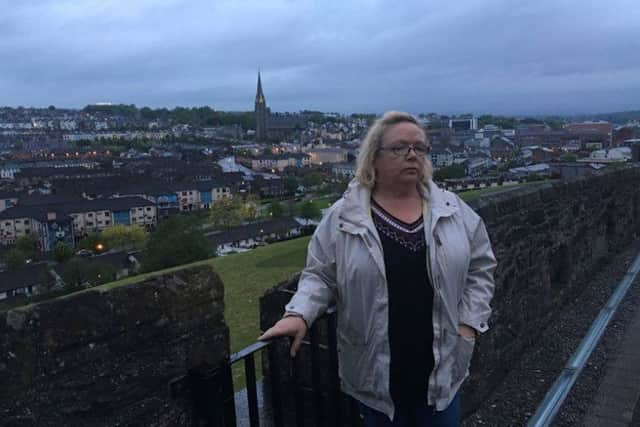'˜Troubles' legacy: Emotional night on Derry's walls as reconstruction of teenager's shooting


The 15-year-old died after a tracer bullet fired by a member of the Queen’s Own regiment was fired from the city’s walls 44 years ago yesterday towards the Bogside and ricocheted before striking and fatally wounding him.
On Tuesday night past, representatives of the Deery family, their legal counsel, members of the Coroners Service and legal counsel for the Ministry of Defence(MoD) gathered at the spot on the city’s walls where there was a British Army post overlooking the Bogside. The post was located at the corner close to Nailors Row within sight of Long Tower church.
Advertisement
Hide AdAdvertisement
Hide AdManus Deery’s sister Helen who has pursued a reinvestigation of her brother’s killing for many decades told the ‘Journal’ at the scene: “I feel kind of sad, but it’s progression because we need this inquest.


“It’s heart breaking. I can see our house from here you know. Manus only went about 100 yards from the house. It’s hard to believe that when you look at Westland Street that a wee boy of 15 went down it and never came back. It’s very emotional when you think about it.”
Whilst the overcast and wet conditions during the reconstruction were a lot different from those on the night of the killing, the point of the exercise was to establish lines of sight from the elevated position overlooking the Bogside. The agreed time for when Manus Deery was shot was 9.37pm. At that exact time on Tuesday night past, daylight was beginning to fade and as said whilst conditions were different it was still very difficult to pinpoint those standing at the site of the killing for the purposes of the exercise itself with the naked eye.
Part of the duties of HM Almanac Office is to chart weather conditions and the conditions on the night of the shooting have already been submitted into evidence for the forthcoming inquest. Dr Steven Bell from the organisation was present at the reconstruction. He was of the opinion that street lighting is a lot more prevalent now than in 1972 and that this would obviously have had a bearing on what could be seen 44 years ago-meaning the site of the death would have been darker than witnessed on Tuesday night.
Advertisement
Hide AdAdvertisement
Hide AdRecent debate has also surrounded the possible type of telescopic equipment used by the soldiers present in the Army post when the fatal round was discharged. Both sets of legal representatives have agreed that no telescopic snipers sight was attached to the weapon used by the now deceased ‘Soldier A’ who fired the shot. ‘Soldier B’ contends that there was no free standing scope nor binoculars used either.


This recently led Richard Campbell of Quigley, Grant and Kyle Solicitors who represent the Deery family to say that the inference to be drawn from that is that ‘Soldier A’ took a “pot shot” from his position into the Bogside.
However, for the purposes of conducting the tests on Tuesday night a selection of four similar telescopes equipment was used.
Richard Campbell told the ‘Journal’: The Coroners Service brought these scopes. One is a standard snipers scope that everyone agrees would not have been fitted to the murder weapon, but the reason for looking through it is to show that the field of vision is magnified times four and that is basically what they would have seen. The other two scopes they brought along were night vision scopes that would have been used in the 70s. However, they stopped making the battery packs for these in the 1970s so they are of no use, so that was a bit futile. The fourth scope is one used by the Army today that has exactly the same power as would have been used in the 70s and that gives us a clear idea of what could have been seen.
Advertisement
Hide AdAdvertisement
Hide Ad“Whilst none of these are the exact type used at the time bear in mind that the inference is that no scope was attached to the rifle anyway.”
A preliminary enquiry into the case will be heard at Laganside Court in Belfast on Monday, June 13. It is expected that a date for an inquest into the killing can be set soon after that.